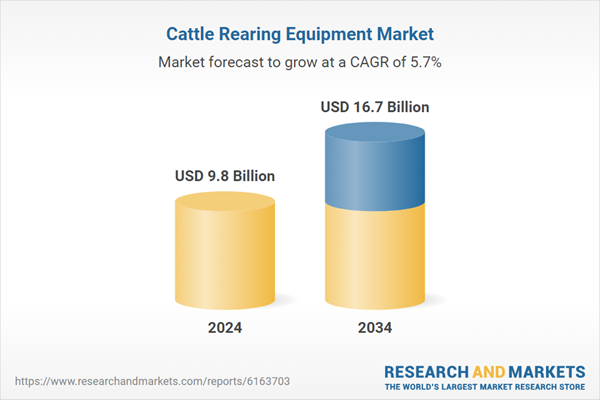Producers are under pressure to meet international food safety standards and maintain traceability, hygiene, and efficiency in their operations. As consumer preferences shift toward premium animal products, equipment that supports animal welfare, reduces labor, and enhances yield is seeing strong demand. Innovation is key in this space, with manufacturers offering intelligent, scalable, and energy-efficient technologies to support evolving livestock management needs and sustainability goals. Export-oriented dairy and meat producers are particularly investing in standardized, high-performance equipment to remain competitive in global markets.
The milking equipment segment generated USD 3.2 billion in 2024 and is expected to witness a CAGR of 6.2% through 2034. As manual milking becomes less feasible due to hygiene concerns and time constraints, the adoption of semi-automated and fully automated milking solutions is growing. These systems offer uniform milk production, improved udder health, and efficient milk handling - making them ideal for large-scale dairy operations that require both high throughput and quality control.
The swine farm segment held a 42.2% share in 2024 and is projected to grow at a CAGR of 6.2% during 2025-2034. While cattle farms have traditionally led the market, pig farming is now gaining traction thanks to advancements in biosecurity, feeding automation, and climate-controlled housing. Modern swine operations demand high-tech waste handling and livestock management tools to support intensive farming at scale. The increased focus on productivity, animal health, and disease prevention has made equipment innovation in pig farming a critical market driver.
U.S. Cattle Rearing Equipment Market held 56.5% share and generated USD 1.8 billion in 2024. This leadership stems from the country’s mature livestock sector, where advanced dairy and beef farming practices are the norm. States such as California, Wisconsin, and Texas are home to high-capacity commercial farms that heavily invest in automation, IoT-enabled systems, and advanced handling equipment. Supportive infrastructure, access to capital, and government subsidies further promote the adoption of modern cattle rearing technologies across the country. The U.S. continues to be a major adopter of next-generation livestock solutions due to its focus on efficiency and animal welfare.
Key industry players in the Global Cattle Rearing Equipment Market include BouMatic LLC, Afimilk Ltd, GEA Group AG, AGCO Corporation, and DeLaval International AB. Leading companies in the cattle rearing equipment market are focusing on continuous product innovation and technology integration to maintain their competitive edge. Manufacturers such as AGCO Corporation and DeLaval International AB are developing automated and intelligent systems that support precision livestock farming. Investments in R&D are driving the introduction of sensor-based feeding, milking, and monitoring technologies to enhance animal health and productivity. Firms are also expanding their product lines to offer scalable solutions for both small and large farms. Partnerships with local distributors, after-sales service expansion, and training programs for farmers are helping increase adoption in emerging regions.
This product will be delivered within 2-4 business days.
Table of Contents
Companies Mentioned
The companies profiled in this Cattle Rearing Equipment market report include:- Afimilk Ltd
- AGCO
- Bob-White Systems
- BouMatic LLC
- Case IH
- DeLaval International AB
- FarmTek
- GEA Group AG
- Jaylor Fabricating Inc.
- Lely Holding S.A.R.L.
- Murray Farm Care Ltd.
- Pearson International LLC
- Priefert Manufacturing Co., Inc.
- Real Tuff Livestock Equipment
- Royal Livestock Farms
Table Information
| Report Attribute | Details |
|---|---|
| No. of Pages | 210 |
| Published | July 2025 |
| Forecast Period | 2024 - 2034 |
| Estimated Market Value ( USD | $ 9.8 Billion |
| Forecasted Market Value ( USD | $ 16.7 Billion |
| Compound Annual Growth Rate | 5.7% |
| Regions Covered | Global |
| No. of Companies Mentioned | 16 |









